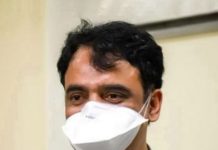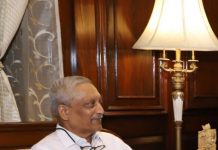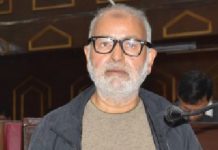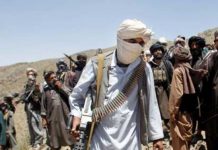EDITED EXCERPTS
How did this book come about?
I was on assignment in Kashmir in 2006 to shoot in the conflict zones, but I came back two months later to hunt for a new subject. I made 25 trips between 2006 and 2011. Like other photographers in Kashmir, I got trapped by two easily available, obvious images; the beauty and the conflict. Then, in 2008, I went to Kashmir without my camera. I realised how powerful it was to look at things outside the lens. How numb the people had become. Their emotions have been suppressed for so long that the numbness has become a casual, daily affair. That was my calling, to talk about the people, the alienation, and the Kashmir beyond the conflict. It affected me too; I needed six months of counselling afterwards.
How did being an outsider affect your work?
The political divide between Kashmir and India made it difficult to get close to people. When you say you’re from New Delhi, Kashmiris think you’re with the army and the army thinks you’re a social activist. It’s difficult to enter the Kashmiri people’s lives, homes and hearts. No one talks about the people. The agenda, even for Kashmiri journalists, is to highlight the conflict. My book works with metaphors. Many portraits are shot through a window or barb wire. I wanted to stay an outsider. One must understand what the Kashmiris have been through, both the Muslims and the Pandits. You cannot buy someone’s emotions. In three months’ encounters you kill 120 children, and then announce a package of 300 crore. It won’t solve anything. Kashmir has a syncretic tradition. One image shows the back wall of Shah-e-Hamdan mosque on the banks of the Jhelum, painted saffron with the mural of a Hindu goddess. A lot of graveyards come up in the pictures. In Kashmir, every locality has a separate graveyard due to the high mortality. Death has become so casual. This is a very political body of work. But don’t ask me about azaadi. I’m talking about human emotions, not political agendas.

Amit Mehra
Penguin
144 pp; Rs 3,499
How did you bridge the tropes of photography — the apolitical aesthetic and the news photograph? Does either take precedence?
Aesthetics come with a social message. A photographer may want to work on a different plane creatively, but his mind is always thinking about the situation. In one picture, people are praying on the street under the shadows of flying pigeons. I must have shot a thousand pictures of people praying, but seeing the shadows it struck me how the peace we all pray for, is passing us by. The most political picture is of the broken, snow-covered doll at Shopian. It’s my tribute to Neelofar and Asiya, of the Shopian murder case. This is a very silent body of work, because the streets and the people of Kashmir are silent. The silence is eerie, not peaceful.
How important is communication with a subject?
It’s important and very difficult. I had to get beyond the political divide that existed in my head too. I listened to the people, gained their confidence. The photographer and the subject should become one, until the subject isn’t looking into a camera but into a mirror. When I shot Veer Munshi, the Kashmiri artist living in exile in Gurgaon, he told me his story over two hours. He was filled with anger, yet behind him was a painting of Gandhi that he was working on. Here is an angry man who still believes in non-violence. I photographed him against that canvas.
What is the departure from your previous works?
I have taken a number of pictures without any faces in the frame. Faces are not important. Look at the picture with the man feeding the pigeons. That is freedom. But as Basharat Peer said in Curfewed Night, Kashmiris are picked up and shot at random. Faces don’t matter. Even the faces of the army men are not important. This is not a personal enmity. It is the situation that’s forcing people against each other.
aradhna@tehelka.com













